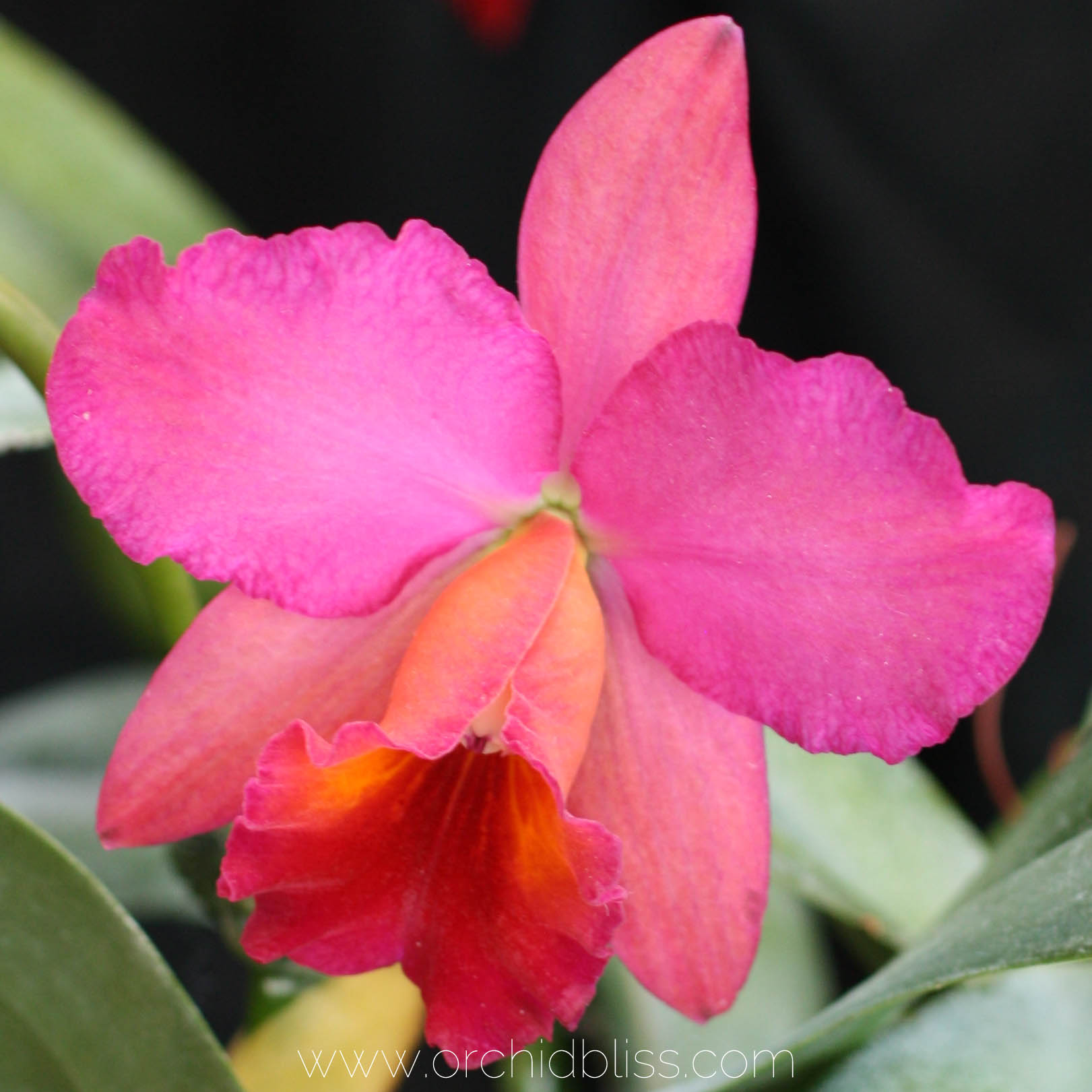How to Get Orchid Babies &/Or More Flowers
Aloha!
Keiki (KAY-key), Hawaiian for “baby” is the term for a new plantlet growing on a mother orchid. These plantlets can grow naturally and they can be encouraged by using plant hormones. Phalaenopsis and Dendrobium orchids are especially prone to producing keikis. Let’s talk about what happens if your orchid has produced a keiki on its own, and how to encourage keikis using Keiki Power Pro. Using hormones doesn’t always result keikis, sometimes the orchid will produce flowers rather than a keiki–and that’s okay too.
To propagate orchids with keiki paste, using a sterile blade, make a shallow cut on a node, or little bump, on the orchid flower stalk and apply the keiki paste. For best results, choose the node that is closest to the base of the orchid. Next, using a Q-tip spread a small amount of keiki paste to the node. Wait for a couple of weeks, and you’ll soon know if you’ve propagated your orchid and have a keiki, or if your orchid is growing more flowers.
I’m assuming you googled how to propagate orchids through offsets because you’re trying to figure out how to get your orchid to propagate. The simplest way to propagate your orchid is by using a hormone paste. By applying keiki paste to either a phalaenopsis or dendrobium orchid, chances are your orchid will produce either an offset (keiki) or more flowers.
Did you know that keikis can mean that your orchid is dying? An overwatered orchid with dying roots can cause orchids to grow keikis. To learn more, click here to grab your cheat sheet to learn how to grow healthier orchids. It will be super helpful.
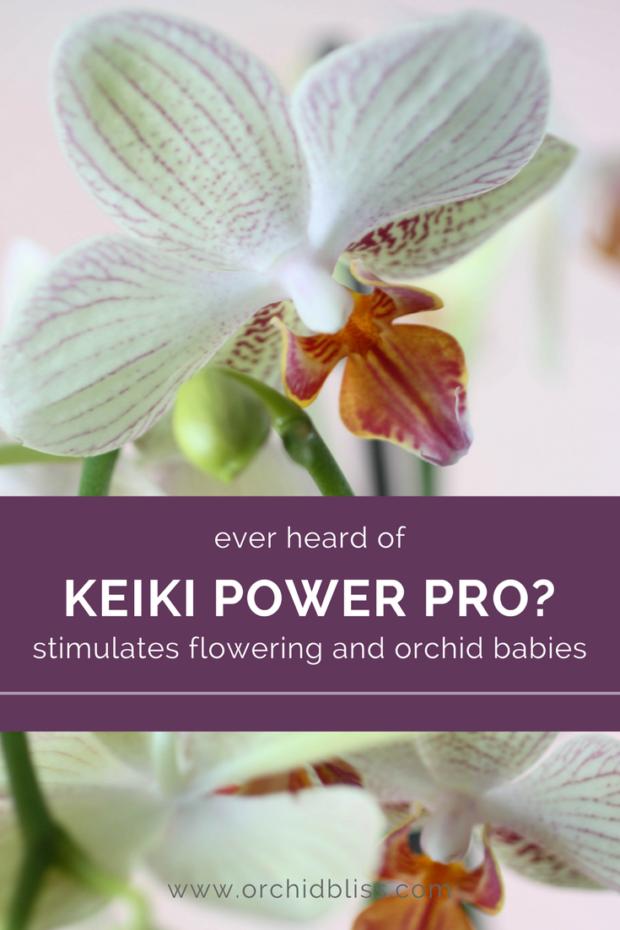
Some of the links on this page may be affiliate links. Click here to learn more.
A Tutorial for Using Keiki Paste – with Pictures
I know, adding a bit of sticky goo to your orchid stalk with the hope of an emerging new orchid or a profusion of flowers sounds like wishful thinking, but I’m telling you, the stuff really works! Using keiki paste is SUPER EASY and a little goes a long way. Once you buy the paste, the small jar will last for many, MANY applications.
Materials for Applying Keiki Paste
- keiki paste
- chopstick or cotton swab for applying the paste
- gloves, for keeping the paste off your hands
- paper towels to wipe off the chopstick and general cleanup
- rubbing alcohol and cotton balls for sterilizing your tools, knife and chopstick
- a sharp knife, utility knife or pruning shears to cut into the orchid node. A disposable utility knife is the most sanitary method.
How to Apply Keiki Paste
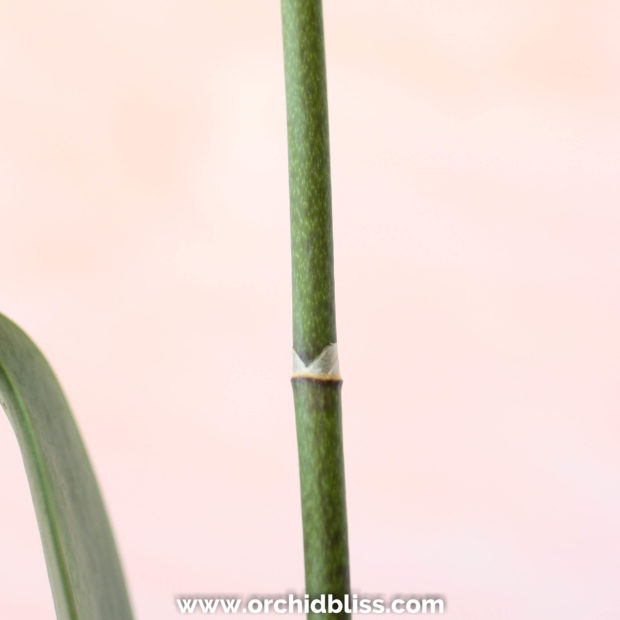
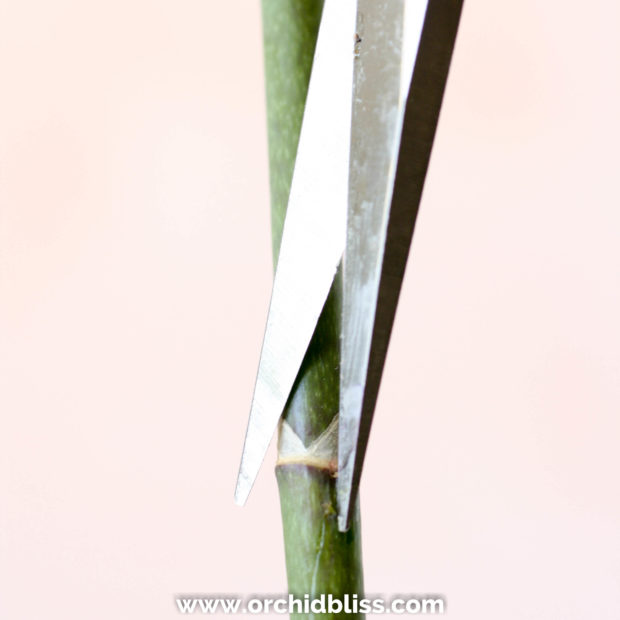
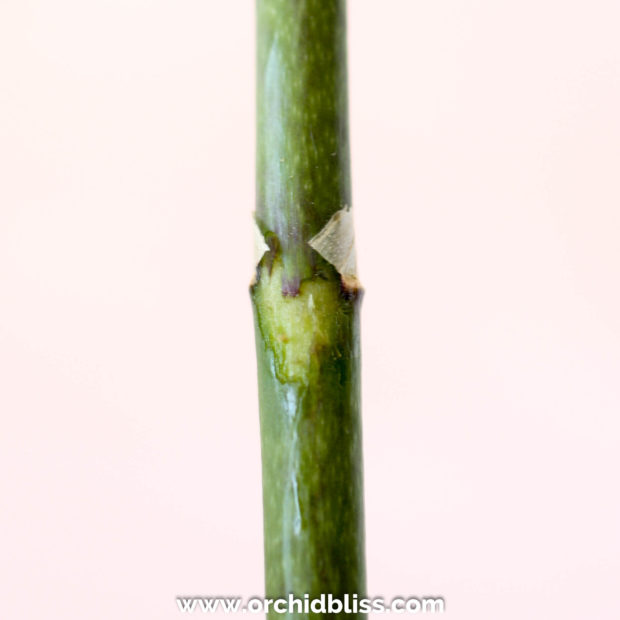
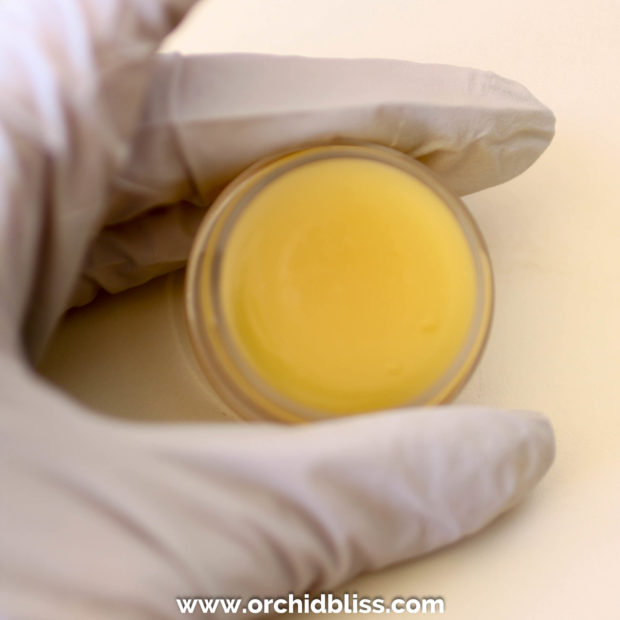
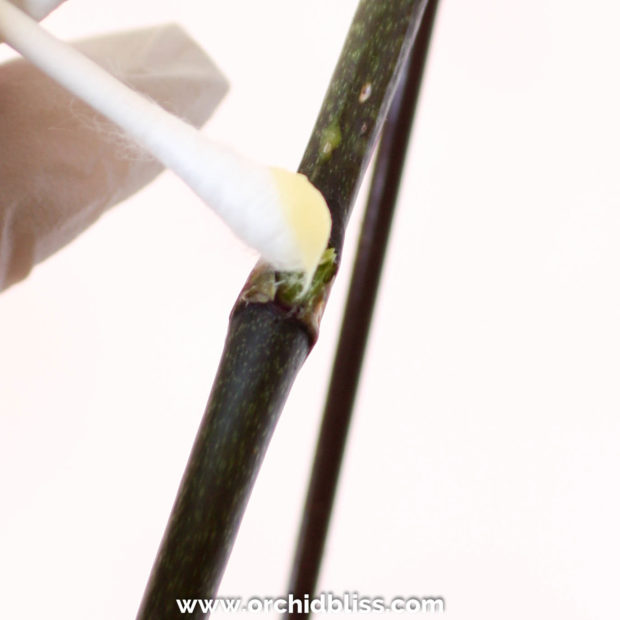
TIP: It’s good practice to record in your plant journal which orchid you applied the paste and the date.
What to Expect After Using the Keiki Paste
After a few weeks, you will be able to see the development of either keikis or flowers. Keikis develop leaves first, while flowers begin with a flower stalk that looks like a closed fist.
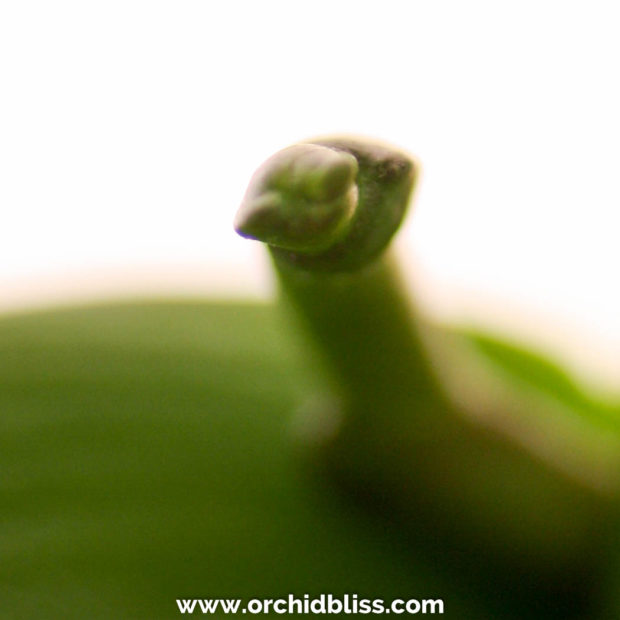
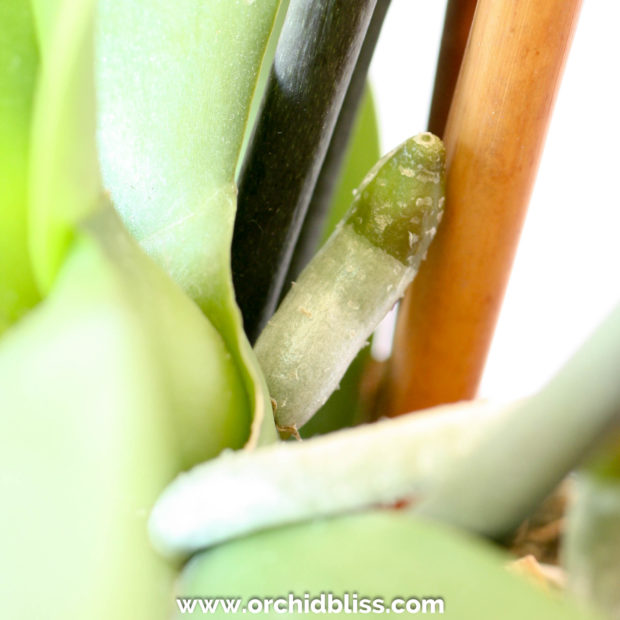
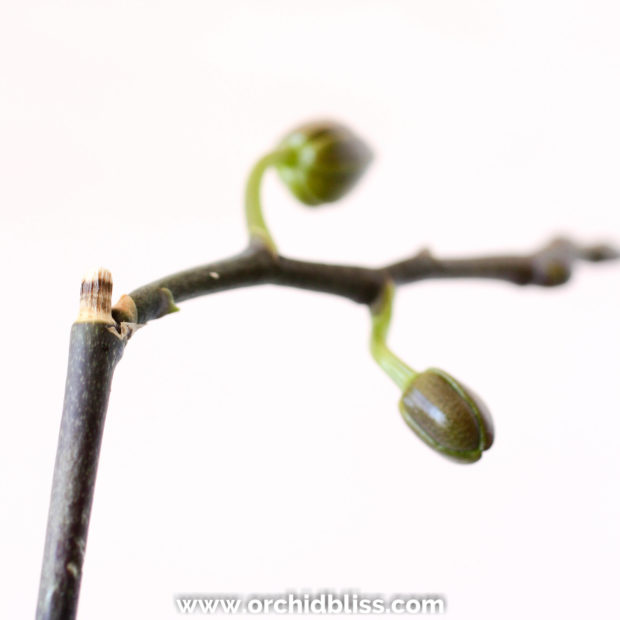
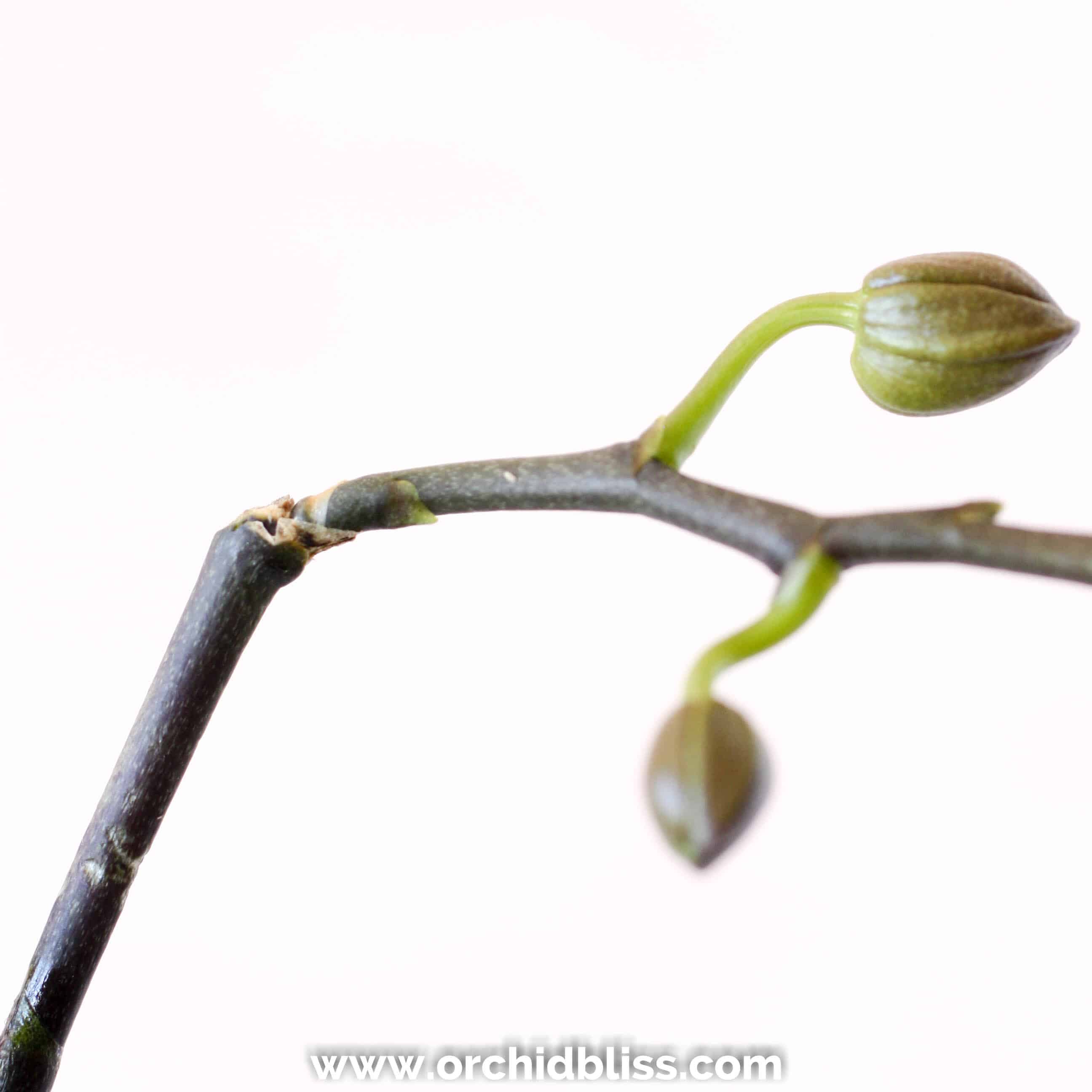
In most cases, you will see new flowers emerging. Or, you may be surprised to see little leaves emerging. These little leaves indicate that you’ve got a keiki, a perfect clone of the mother plant. Do not remove the baby plant until its roots are 1-3″ long.
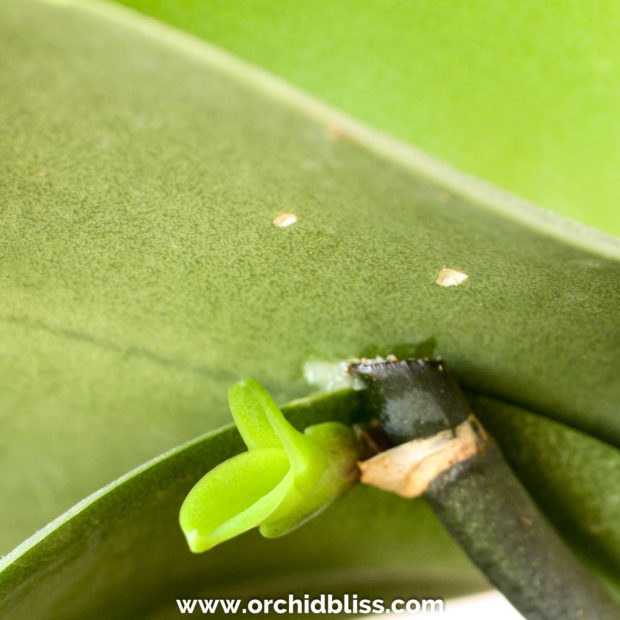
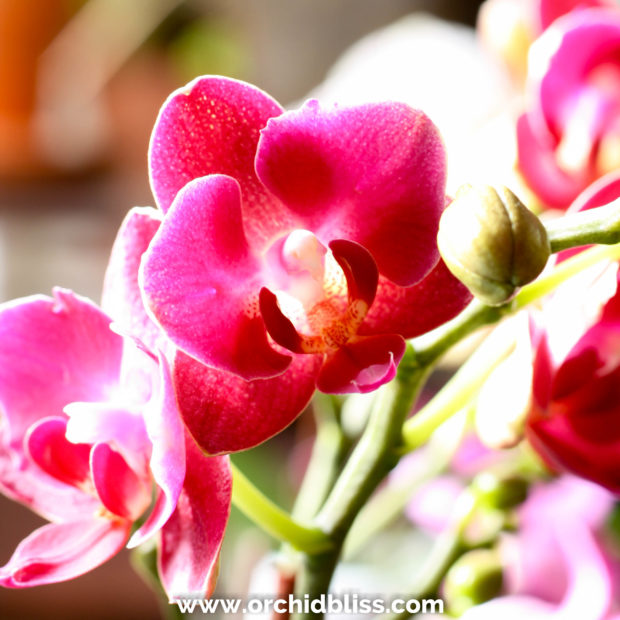
When Your Orchid Grows Flowers, Not Keikis
Although keiki paste is marketed for growing keikis, I’ve had more success encouraging more flowers. I have had limited success growing plantlets and robust success getting my Phalaenopsis to push out more flowers. And, I’m not the only one. Orchid distributors use it to get the most flowers possible. They know we’ll pass over the orchids with only a few flowers and gravitate to the plants packed with blooms.
What Is Keiki Paste?
If your orchid hasn’t produced keikis on its own, or you want your orchid to produce more flowers, you can use hormones to kick-start your orchids. Keiki paste is marketed as a way to asexually produce more orchids. The question though is that when using the paste, you don’t know if you’ll get a plantlet or a flower stalk. My experience is that most of the time, the keiki paste results in a flower stalk, which I am totally fine with. In my experience, keiki paste works best with Phalaenopsis, or moth orchids (the kind most often found in the grocery store).
Why Keiki Paste Works
Keiki paste contains a growth hormone called cytokinin that encourages cell division. The hormone is added to lanolin because lanolin sticks to the orchid and won’t wash away if it gets wet. When the keiki paste is applied to an orchid node, the hormone will (hopefully, it doesn’t always work) result in either a keiki (an exact clone of the mother plant) or in an inflorescence (a flower stalk).
How to Pot a Keiki
Leave the little plantlet alone until the roots and leaves are about 2-3 inches long. Then, with a new razor blade cut the keiki from the mother plant. Using a new, unused razor blade will prevent the spread of disease between plants.
Using a potting medium designed especially for young orchids, pot the keiki in a small, clear orchid pot. Be gentle with your new keiki. If possible, provide extra humidity for your fledgling plant. Otherwise, care for your new plantlet as you do the mother plant.
By the way, you don’t have to remove the keiki from the mother plant.
When Your Keiki Grows Up – Keikis But No Longer Babies
I received these photos from readers. In the first photo, both the keiki and the mother orchid are in flower. In the second image, you can see fully developed keiki roots and leaves. These keikis no longer look like babies, These keikis are fully developed orchids.

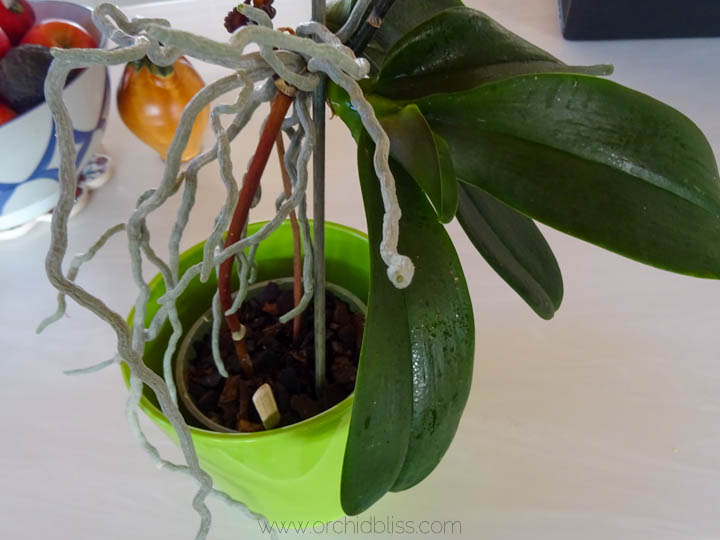
Maybe You’ve Grown a Keiki Without Using Keiki Paste and You’re Wondering Why Roots and Leaves Are Growing On Your Orchid’s Flower Stalk
Keikis can grow all on their own, without any prompting from keiki paste. Your orchid may surprise you when one day you notice leaves and roots growing on your orchid’s flower stalk. This is one way that orchids propagate. The baby plantlet is a clone of the parent plant. This type of propagation is most common in Phalaenopsis and Dendrobium orchids. If you do notice a keiki growing, look for signs of stress on the mother plant. Perhaps the root system is in trouble. Keikis are not always a sign that something is amiss, but it is something to be aware of.


